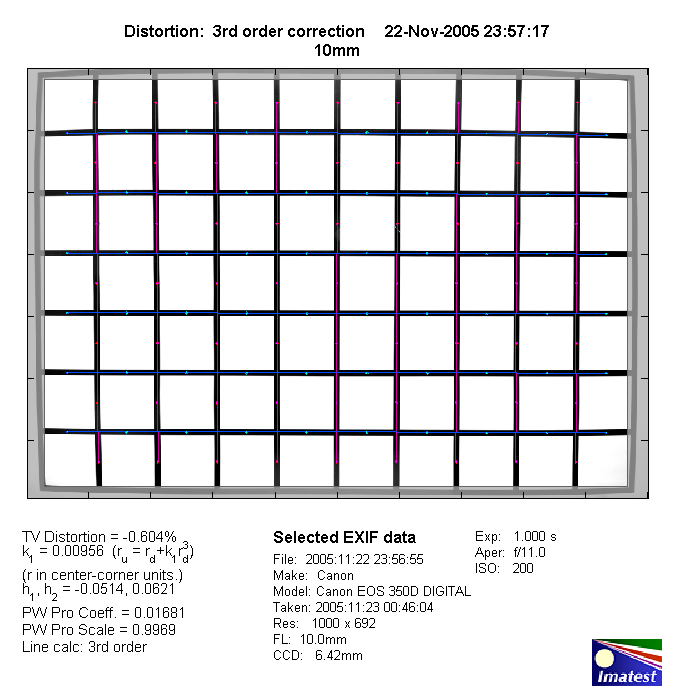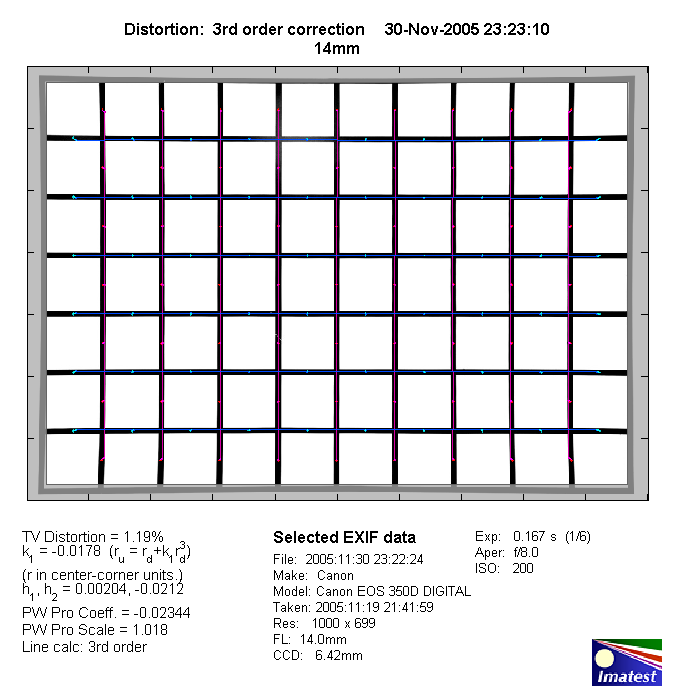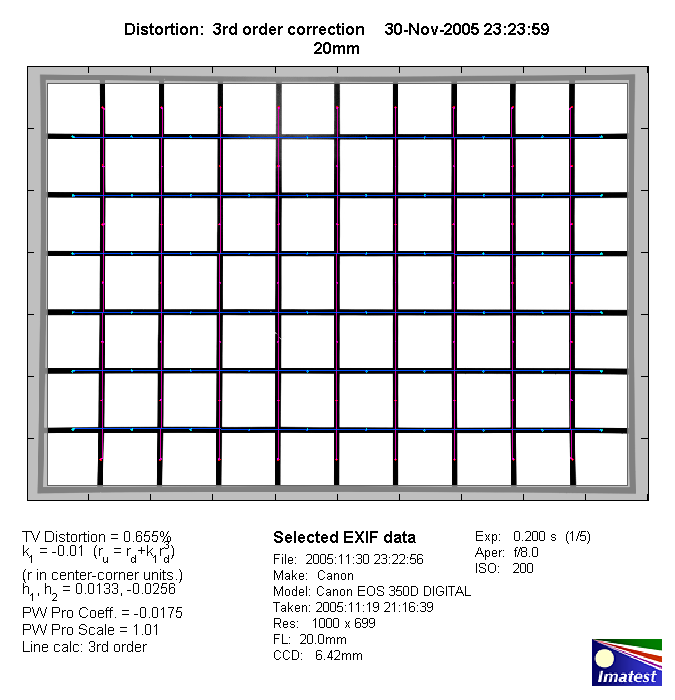|
Sigma AF 10-20mm f/4-5.6 EX DC HSM - Review / Lab Test Report - Analysis |
|
Lens Reviews -
Canon EOS (APS-C)
|
|
Page 2 of 2
Distortion
The Sigma AF 10-20mm DC showed a rather unusual distortion characteristic.
At 10mm most of the image field is almost free of distortion so the measured
distortion figures look fairly fine here (taken a little inward from the borders).
However, this is only part of the truth. If you check the 10mm distortion chart below
you will notice that the outer image portion is actually heavily (barrel-)distorted -
probably in the 2-3% range.
At 14mm the lens shows a rather strong degree of pincushion distortion, less so at 20mm.
10mm (see text comments above!):

14mm:

20mm:

The chart above has a real-world size of about 120x80cm or 40x the focal length.
Expect more distortion towards closer focus distances.
Vignetting
Typical for many ultra-wide zooms the Sigma also suffers from vignetting problems
which are most pronounced at 10mm @ f/4 where the vignetting exceeds 1.3EV.
At 14mm @ f/4.5 vignetting is also fairly heavy, a little less so at 20mm.
One stop down from the max. aperture helps to reduce the problem to an acceptable
degree.

MTF (resolution)
The lens produced a good to very-good performance in the lab.
Surprisingly this also includes the 10mm setting where you would usually
expect the worst performance. Generally the center performance is exceptionally
high at all focal lengths and aperture settings. At 10mm the borders and even
the extreme borders are already pretty good at wide-open aperture and did even
manage to wander well into very-good territories at medium aperture settings.
At 14mm and 20mm the border quality is slightly worse but still good to
very-good.
It is worth to mention that we tested two samples of this lens.
One had a slight centering problem at 10mm which also resulted in slightly
worse MTF figures here.
Please note that the MTF results are not directly comparable across the different systems!
Below is a simplified summary of the formal findings. The chart shows line widths per picture height (LW/PH) which can be taken as a measure for sharpness.
If you want to know more about the MTF50 figures you may check out the corresponding Imatest Explanations
Chromatic Aberrations (CAs)
Chromatic aberrations (color shadows at harsh contrast transitions) are moderate for an
ultra-wide zoom lens. At 10mm the average CA pixel width at the borders exceeds 1.5 pixels
which isn't good in absolute terms but still acceptable relative to similar other lenses.
At 14mm and 20mm CAs are only a minor issue.

Verdict
The Sigma AF 10-20mm f/4-5.6 EX DC HSM is a worthy alternative in the ultra-wide arena for APS-C DSLRs.
At 10mm it showed some of the highest resolution figures that we've seen so far here whereas at 14mm
and 20mm the results are slightly worse than the rest of the gang but still pretty good.
On the down-side the lens shows fairly heavy vignetting at large aperture settings. At 10mm there're
some quite pronounced barrel distortions at the extreme corners (far less in the inner image field)
whereas at 14mm pincushion distortions can be quite obvious.
It's a joy to use this lens with its excellent build quality, smooth controls and fast AF on top.
The alternatives in this zoom range perform quite similar so you've to consider your priorities.
The Sigma AF 10-20mm f/4-5.6 EX DC HSM is surely worth a deeper look here.
|